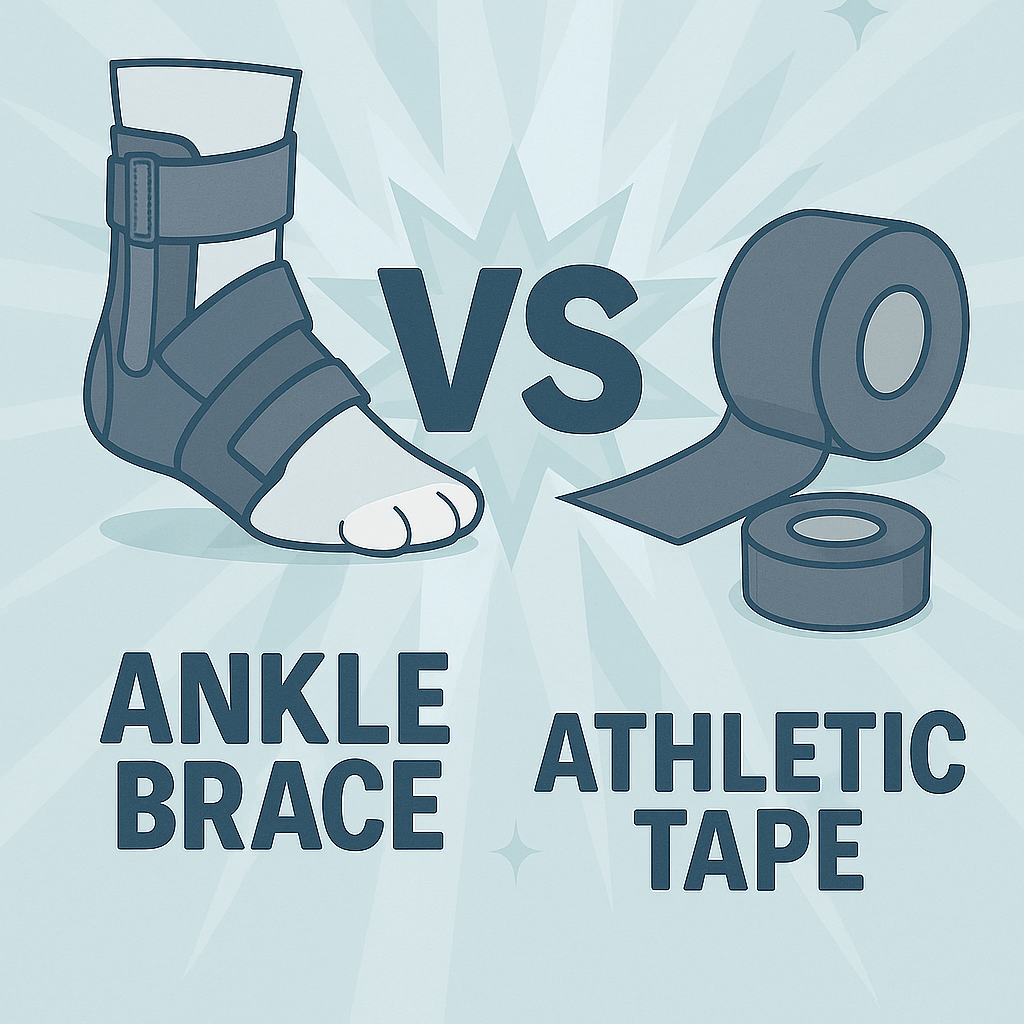The Cost & Consequences of Ankle Sprains
Ankle sprains are not small injuries. It’s the most common musculoskeletal injury in sports, and they don’t simply go away after the swelling fades. One sprain can lead to chronic ankle instability, repeat injuries, and even early-onset osteoarthritis. Active individuals lose valuable time, sports teams lose key players, and patients could face years of medical bills and limited mobility.
The truth is simple: ankle sprains aren’t just a nuisance; they’re a gateway to long-term damage and frustration.
What Works (and Why)
A 2019 study by Thomas Kaminski, Alan Needle, and Eamonn Delahunt, published in the Journal of Athletic Training, concludes: ”External prophylactic supports and preventive exercise programs are effective for reducing the risk of ankle sprains in both uninjured and previously injured populations. Ankle bracing appears to offer the best outcomes in terms of cost and risk reduction.”
Translation: both work, but not equally.
Taping has been the go-to method for decades, but it’s more expensive over time, inconsistent in application, and loses effectiveness as the day (or game) progresses. Training is helpful, but it’s time-consuming, costly, and requires years of consistency to maintain the benefits.
Bracing, on the other hand, consistently reduces the risk of sprains by up to 70% (Dizon et al., 2010) and is more cost-effective, time-efficient, and more readily available than professional taping.
What’s missing is a support that’s effective, efficient, and sustainable.
Enter AAMO: The Brace Built to Address What Others Don’t
The AAMO ankle brace was designed to do more than just wrap the joint. With its patent-pending 4-strap system, it stabilizes not only the ankle but also the forefoot, an area ignored by traditional braces. This means better support of the major ankle movements (inversion, eversion, pronation, supination, dorsiflexion, and plantar flexion) that, when excessive, lead to stretched or damaged ankle ligaments (a sprain). In other words: fewer weak points, fewer sprains.
Here’s why it matters:
-
Efficient: No specialist taping needed. Put it on, adjust, and go.
-
Effective: Mechanical support where athletes and active individuals need it.
-
Smart Design: Supports the ankle, forefoot, arch, and Achilles for comprehensive support.
-
Cost-Savvy: One brace replaces endless rolls of tape.
-
User-Friendly: Comfortable, easy to wear, and built for real-world use.
The research shows that the best prevention comes from combining supports with training. The AAMO brace fits seamlessly into that model: it provides immediate mechanical protection while athletes and patients work on building long-term stability.
The Bottom Line
The science is clear: ankle bracing is the frontline defense against sprains. What hasn’t been clear, until now, is how to design a brace that covers all the gaps left by tape, outdated brace designs, and low adherence to training programs. Until now.
The AAMO ankle brace isn’t just another support; it’s the solution athletes, trainers, individuals, and medical professionals have been waiting for.
Don’t wait for the next sprain. Stop it before it starts.
Sources
Kaminski, T. W., Needle, A. R., & Delahunt, E. (2019). Prevention of Lateral Ankle Sprains. Journal of Athletic Training, 54(6), 650–661. https://doi.org/10.4085/1062-6050-487-17
Dizon JM, Reyes JJ. A systematic review on the effectiveness of external ankle supports in the prevention of inversion ankle sprains among elite and recreational players. J Sci Med Sport. 2010;13(3):309–317. doi: 10.1016/j.jsams.2009.05.002. https://doi.org/10.1016/j.jsams.2009.05.002


Leave a comment: